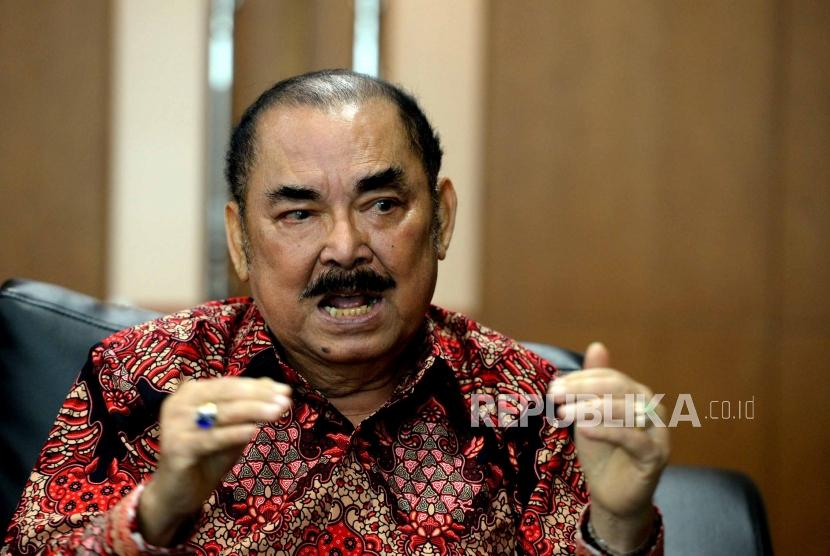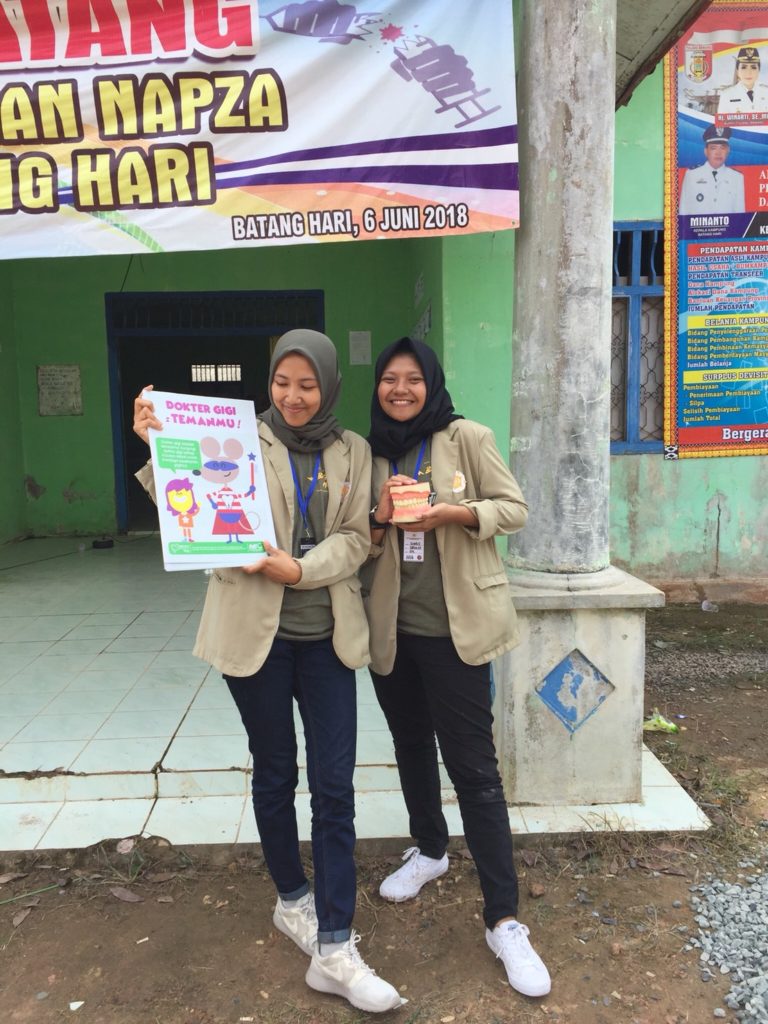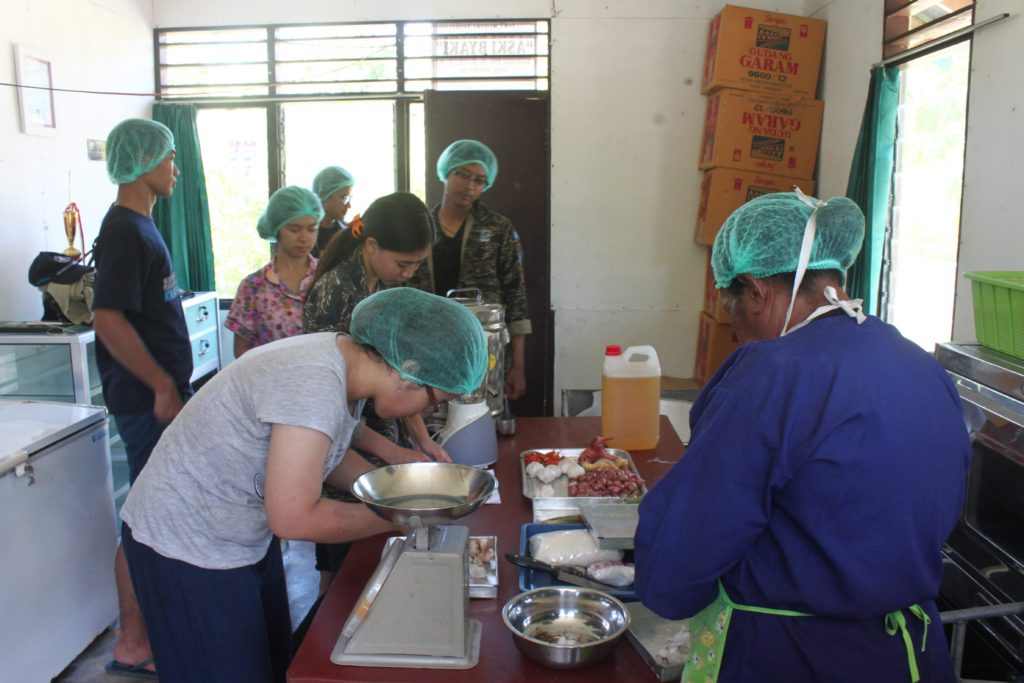
Photo by Republika/ Wihdan
University students hopefully can stimulate villagers to take a turn from a spectator into exhibition
REPUBLIKA.CO.ID, By Prof Dr Haryono Suyono, former minister of people’s welfare and poverty alleviation RI.
About 6,000 students from The Universitas Gajah Mada (UGM) in the seventh semester, on June 23, 2018, went to villages throughout Indonesia. They were released by PDTT Village Minister Eko Prio Sandjojo accompanied Bay Rector of Universitas Gajah Mada Prof. Dr. Panut Mulyono, complete with Vice Rectors, hundreds of honorary invitations including Secretary General Anwar Sanusi, Director General Taufik Majid, Expert Team Haryono Suyono, Jimmy Gani, Avialiani, Dana Avrizal, Bibid Samad, Abdullah Kamil, Wawan, and Para Mita from the Ministry of Village. Yes, this is because UGM is a university that is very thick as a bearer of the Pancasila nation’s ideology that has been strong and has been a driving force for KKN in the village for a long time.
The release of students this year was also attended by regents, deputy regents or representatives of regional governments who accepted the students. On that occasion, the rector of Panut Mulyono stated that the commitment of the Universitas Gajah Mada to send students to the villages brought innovation and provided opportunities for the absorption of local aspirations and wisdom as the provision of students in the future. The release carried out in the open field also listened to the messages of the Minister of the Village who enthusiastically assured the attention of the Jokowi government to the development of villages and rural communities by providing hundreds of millions of rupiah in direct funds to the villages.
The Village Minister asked students, inviting the community and village officials to work together to use village funds to support development by working systematically, seriously and hard at building villages and their communities. Mainly encouraging the role of village communities to actively participate in development. Because, the success of village development and its people can improve welfare and bring Indonesia to become the number 4 country in the world by 2050.

Like the KKN of various other universities, the KKN organized by UGM initially began activities by identifying problems faced by the village communities visited. This is of course a foundation for developing various solutions offered to the community in the village. At the same time, because UGM was included in a university with extensive experience in Community Service Study, students supported by hundreds of accompanying lecturers brought and offered various innovations in the results of the study to be implemented so as to raise the level of the village community.
The presence of PDTT Village Minister Eko Prio Sandjojo, who after his speech immediately blended in with thousands of students, making the atmosphere even more intense. This is because the minister invites guests to mingle with students who patiently orderly stand up in the increasingly warm weather. The students scrambled to shake hands with the material and honorable guests who blended while brandishing their cellphones each taking a very happy moment. The hot air became cool because of the festive atmosphere but remained orderly because the students did not expect the Minister to be accompanied by the chancellor, vice chancellor and guests to mingle with the students outside the prescribed scenario.
The atmosphere increased the enthusiasm and trust that the government was keen to give trust to village officials by providing very large funds to build facilities and infrastructure for socio-economic activities in the village. At the same time implementing the four priorities for health, education and village community development in developing an independent economy so that each family can become a healthy, prosperous and independent family, and progress rapidly to catch up so far. And that, it seems reflected as the hope of students who will jump into villages and transmigration areas outside Java.
It is appropriate to provide supplies to students who will stay in the village for more than one month. The students are also expected to stimulate the village community to change from a passive role as a development audience to become active actors in developing villages and communities in their villages. The active role of the community has accelerated development, such as the experience of cultural change, many of which have become new cultures, have a small number of children, but have a high quality in which the community takes an extraordinarily high role.
Furthermore, the presence of the Village Minister was used to formalize “VonTrip” an innovation in building tourism at the rural level. Vontrip is a platform for volunteer tourism activities based on community learning and empowerment activities (PPM) by the UGM academic community. This platform was first launched in bulk and planned as an educational and community service activity through tourism and facilitating the distribution of sponsors’ assistance to help the community or regional government display local excellence.
In the past, during the development of Posdaya in the villages, tourism village development had been carried out where local uniqueness was used as an attraction to bring local and international tourists. The arrival of tourists in the village was entertained with simple “tononan” and strange and interesting competition activities for “kioa people”.
For example, a race to plant rice should be carried out by going backwards but the conditions of the paddy are neat, must be completed in an orderly and orderly manner because the rice must thrive and produce abundant crops. Errors in sticking rice stalks cause rice not to grow optimally.
Another competition is how to move a buffalo or cow working on the land, it is not easy, because the control for the buffalo that is pulled too hard will result in the buffalo or cow being angry and unwilling to move. A habit carried out by villagers everyday but for young people in the city can be a very interesting spectacle and farming practice.
Also described, if students get to the village, they will see the development of superior programs in villages such as Bumdes, namely the development of Village-Owned Enterprises. An effort to equate economic development at the village level that will attract the attention of students to participate in developing attractive future investments.
The development will give birth to online trading activities which for students are a new business area as a modern business development without production sites that are widespread in the village so that it does not need to be owned in a certain area. Smart students will see this as a new opportunity in the future to have a modern agricultural production network and the results of local wisdom that can be packaged in the modern business of the future.
In various districts students will begin to see inter-village cultivation in the form of Prukades, a superior product between villages with a modern processing system where rice fields are removed because rice fields are cultivated with modern systems and planted with corporate agricultural systems that produce products for export and large walks. There campus innovation is very challenging to advance modern agriculture in Indonesia.
(Source: https://republika.co.id/berita/kolom/wacana/18/07/25/pcev7b396-kkn-gajah-mada-bangun-desa-dengan-inovasi-modern; translator: Harun Ardiansyah)
























